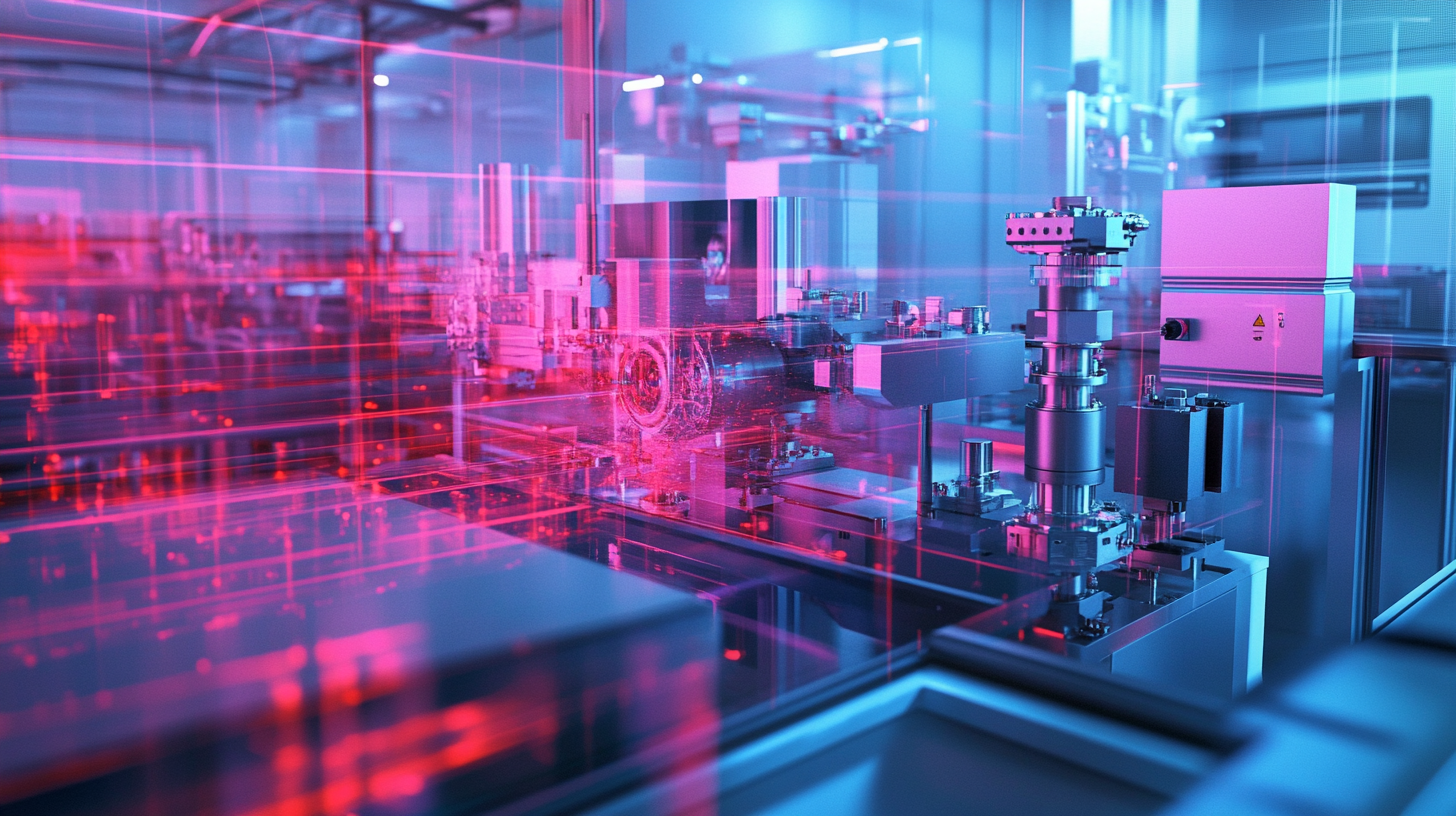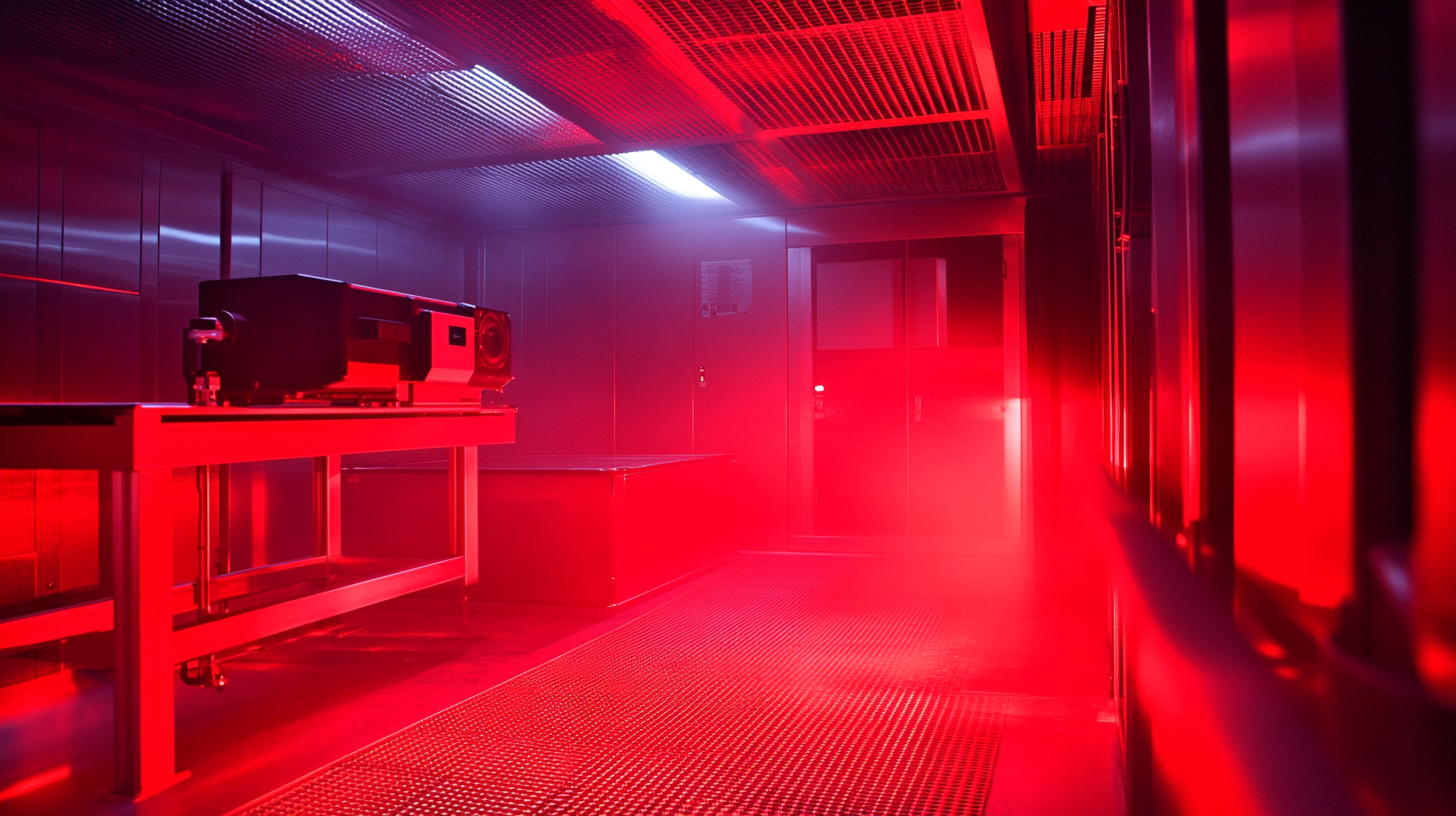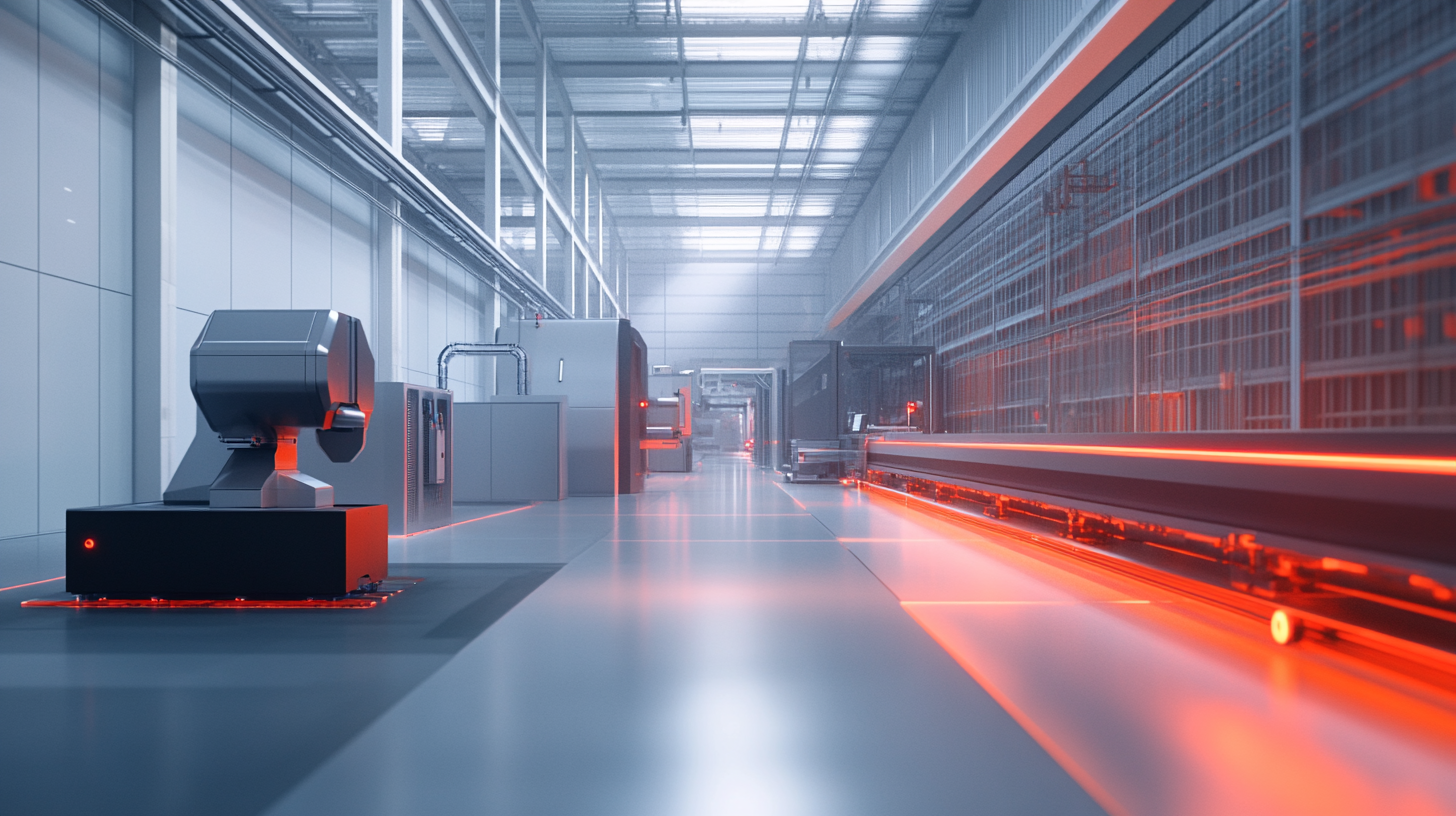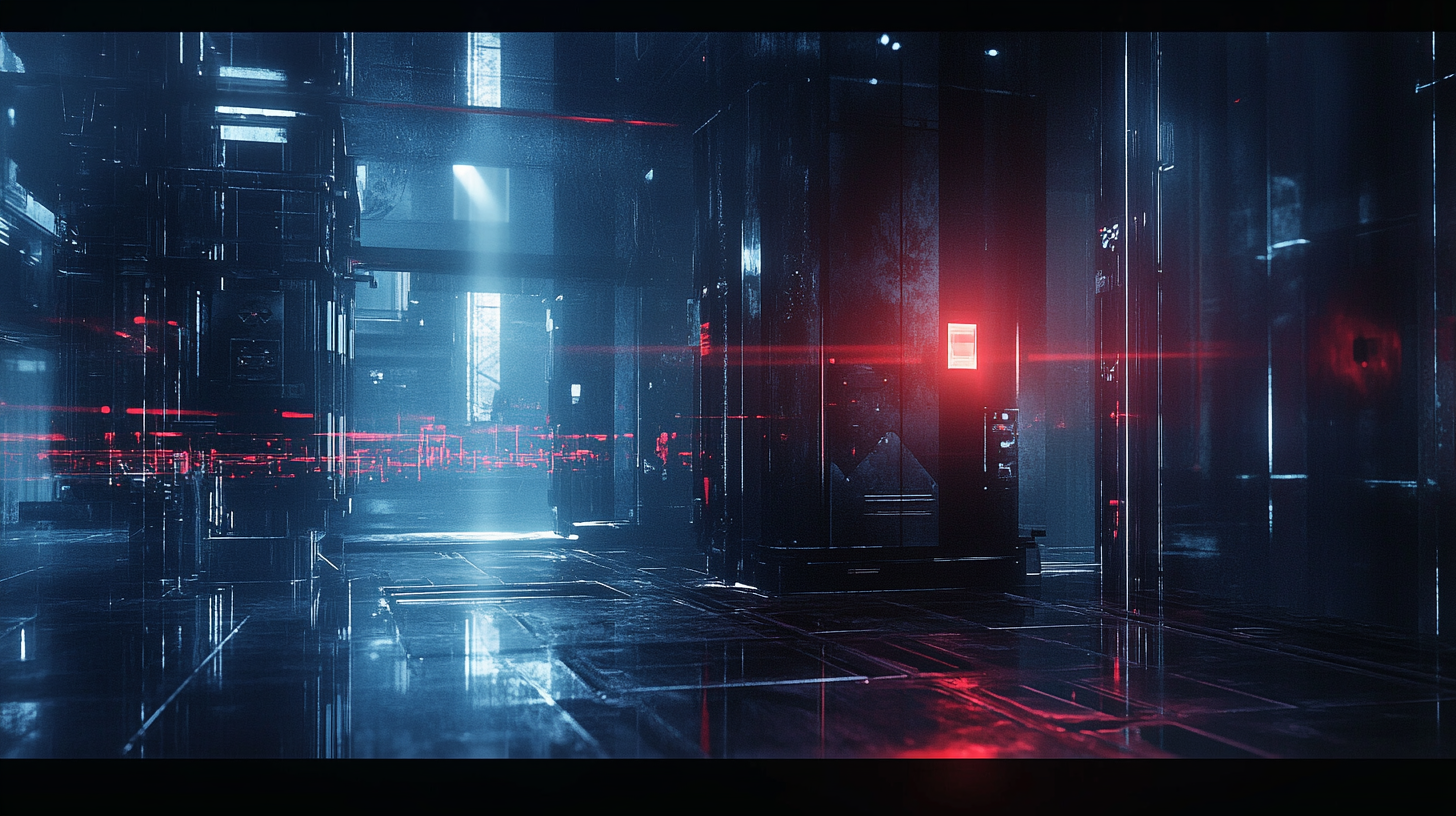© 2025 Messer Cutting Systems, Inc.
In today's competitive manufacturing landscape, the quest for efficiency and precision is more crucial than ever. One innovative solution that has emerged to address these needs is the Co2 Laser Cutter. Known for its remarkable versatility and accuracy, this technology not only streamlines the cutting process but also opens up a world of possibilities for materials and designs. By harnessing the power of Co2 laser cutting, manufacturers can achieve intricate cuts with minimal waste, ultimately elevating production standards and reducing operational costs.
As industries continue to evolve, embracing advanced tools like the Co2 Laser Cutter can be a game changer. This blog will explore how these sophisticated machines enhance manufacturing efficiency, reduce turnaround times, and ensure consistent quality in every project. By unlocking the potential of Co2 laser technology, businesses can stay ahead of the curve, respond swiftly to market demands, and drive innovation in their operations. Join us as we delve into the transformative capabilities of Co2 Laser Cutters and how they can shape the future of manufacturing.

CO2 laser cutters have emerged as a pivotal technology in modern manufacturing, significantly enhancing operational efficiency and precision. According to a report by MarketsandMarkets, the global laser cutting market is projected to reach $9.54 billion by 2025, growing at a CAGR of 5.5%. This surge is largely driven by the versatile applications and advantages of CO2 laser systems in various sectors, including automotive, aerospace, and textiles. One of the primary advantages of CO2 laser cutters is their ability to cut through a wide range of materials, including plastics, wood, glass, and fabrics, with remarkable accuracy. The laser's focused beam enables intricate designs and fine details, enhancing product quality while minimizing waste and rework. A study by the National Institute of Standards and Technology highlights that using laser cutting technology can reduce fabric wastage by up to 30%, ultimately leading to cost savings and increased profitability for manufacturers. Furthermore, CO2 laser cutters offer a non-contact cutting solution, which reduces the likelihood of material deformation. The absence of physical contact means that delicate materials can be processed without damage, preserving structural integrity. This becomes especially critical in industries like aerospace, where precision is paramount. Additionally, the flexibility of CO2 lasers allows manufacturers to switch between different materials and designs rapidly, showcasing their adaptability in a fast-paced production environment. As industries continue to seek innovative ways to enhance efficiency, CO2 laser cutters stand out as a transformative tool in the manufacturing landscape.

CO2 laser cutters have become an indispensable tool in modern manufacturing, offering unmatched precision and efficiency. One of the key features that enhance their capabilities is the use of advanced optics. According to a report by Industry Research, the introduction of high-quality lens systems in CO2 lasers has improved cut precision by up to 30%, enabling manufacturers to achieve intricate designs with minimal material waste. This enhanced precision directly impacts bottom lines, allowing for a reduction in rework and increased production speeds.
Another significant feature is the integration of intelligent software systems. These systems utilize advanced algorithms to optimize cutting paths based on the material type and thickness, which can lead to a 20-25% reduction in processing time. A study conducted by the Laser Institute of America highlights how automated nesting software contributes to significant material savings, especially when working with complex shapes. This not only elevates manufacturing efficiency but also promotes sustainability through reduced material consumption.
Moreover, the capability of CO2 laser cutters to handle a wide range of materials—from plastics to textiles—further enhances their operational versatility. According to a Global Market Insights report, the demand for versatile laser cutting systems is expected to grow at a CAGR of over 10% in the coming years. As manufacturers seek to streamline their operations and broaden their product offerings, investing in high-performing CO2 laser cutting technology becomes essential to maintaining a competitive edge in the industry.

CO2 laser cutters have become integral to various industries due to their versatility and efficiency in material processing. With market analysis indicating a robust demand for laser processing equipment, CO2 lasers specifically are prominent due to their effectiveness in cutting, engraving, and marking applications. A report from industry analysts highlights that the global laser cutting machine market is expected to grow significantly, with forecasted growth rates surpassing 9.2% from 2024 to 2032. This expansion is attributed to the increasing adoption of advanced laser technologies across sectors such as automotive, aerospace, and electronics.
In the manufacturing sector, CO2 lasers excel at cutting materials like wood, plastics, glass, and textiles, providing clean and precise edges that reduce the need for subsequent finishing processes. Recent studies have showcased the influence of laser cutting parameters on both surface and kerf quality, emphasizing that optimal settings can substantially enhance product reliability and performance. The ability to manipulate laser settings further allows manufacturers to adapt to varying material types, thus streamlining production cycles and increasing overall efficiency.
Moreover, the application of CO2 lasers extends to the burgeoning fields of medical device manufacturing and packaging, where precision and cleanliness are paramount. The technology’s efficacy in delivering intricate designs and markings in high volumes aligns with market demands, as evidenced by reports indicating significant growth in segments like laser marking, valued at approximately USD 3.65 billion in 2023. As industries continue to embrace automation and advanced technologies, the potential for CO2 laser cutters to elevate manufacturing efficiency remains promising.

Implementing CO2 laser cutting technology in manufacturing processes not only enhances precision but also significantly improves cost-effectiveness and return on investment (ROI). Unlike traditional cutting methods, CO2 lasers provide a highly efficient means of cutting various materials, from metals to plastics. By minimizing material wastage through precise cutting, manufacturers can maximize their output while reducing overall costs. This efficiency translates into significant savings in raw material expenses, which is a critical consideration in today's competitive market.
Moreover, the initial investment in CO2 laser cutters is often offset by their long-term operational advantages. These machines typically require less maintenance compared to conventional cutting tools, resulting in reduced downtime and maintenance costs. Additionally, the speed of laser cutting allows for quicker production times, enabling manufacturers to meet tight deadlines and increasing throughput. As such, the ROI on CO2 laser systems becomes evident not only through direct savings but also through enhanced productivity.
Furthermore, the versatility of CO2 lasers means they can be used across multiple industries, adapting to various production needs. This adaptability reduces the need for multiple machines, further consolidating equipment expenses and the costs associated with operator training. Overall, the strategic implementation of CO2 laser cutting technology stands as a compelling choice for manufacturers looking to improve efficiency while ensuring cost-effective operations.
The future of manufacturing is rapidly evolving, and CO2 laser cutting technology is at the forefront of this transformation. As industries seek ways to enhance efficiency and precision, the adoption of CO2 laser solutions is projected to grow significantly. According to a report by MarketsandMarkets, the global CO2 laser market is expected to reach USD 4.66 billion by 2026, growing at a compound annual growth rate (CAGR) of 5.6% from 2021 to 2026. This growth reflects the increasing demand for high-precision cutting across various sectors, including automotive, aerospace, and electronics.
Innovations in CO2 laser technology have led to critical advancements in cutting speed, accuracy, and versatility. With developments in resonator designs and beam quality, manufacturers can achieve intricate cuts with minimal material waste. The ability to cut through various materials, including metals, plastics, and wood, makes CO2 lasers an indispensable tool in modern manufacturing facilities. Furthermore, energy efficiency improvements are allowing businesses to reduce their operational costs while maintaining high-quality output.
As the industry evolves, automation will play a pivotal role in enhancing the capabilities of CO2 laser systems. Integration with smart manufacturing solutions, such as IoT and AI, is expected to streamline processes and increase machine uptime. For instance, predictive maintenance powered by AI can foresee equipment failures, thus minimizing downtime. As these trends continue to shape the landscape of CO2 laser cutting technologies, manufacturers will be better equipped to meet the challenges of a competitive market while driving innovation and efficiency in their operations.
© 2025 Messer Cutting Systems, Inc.